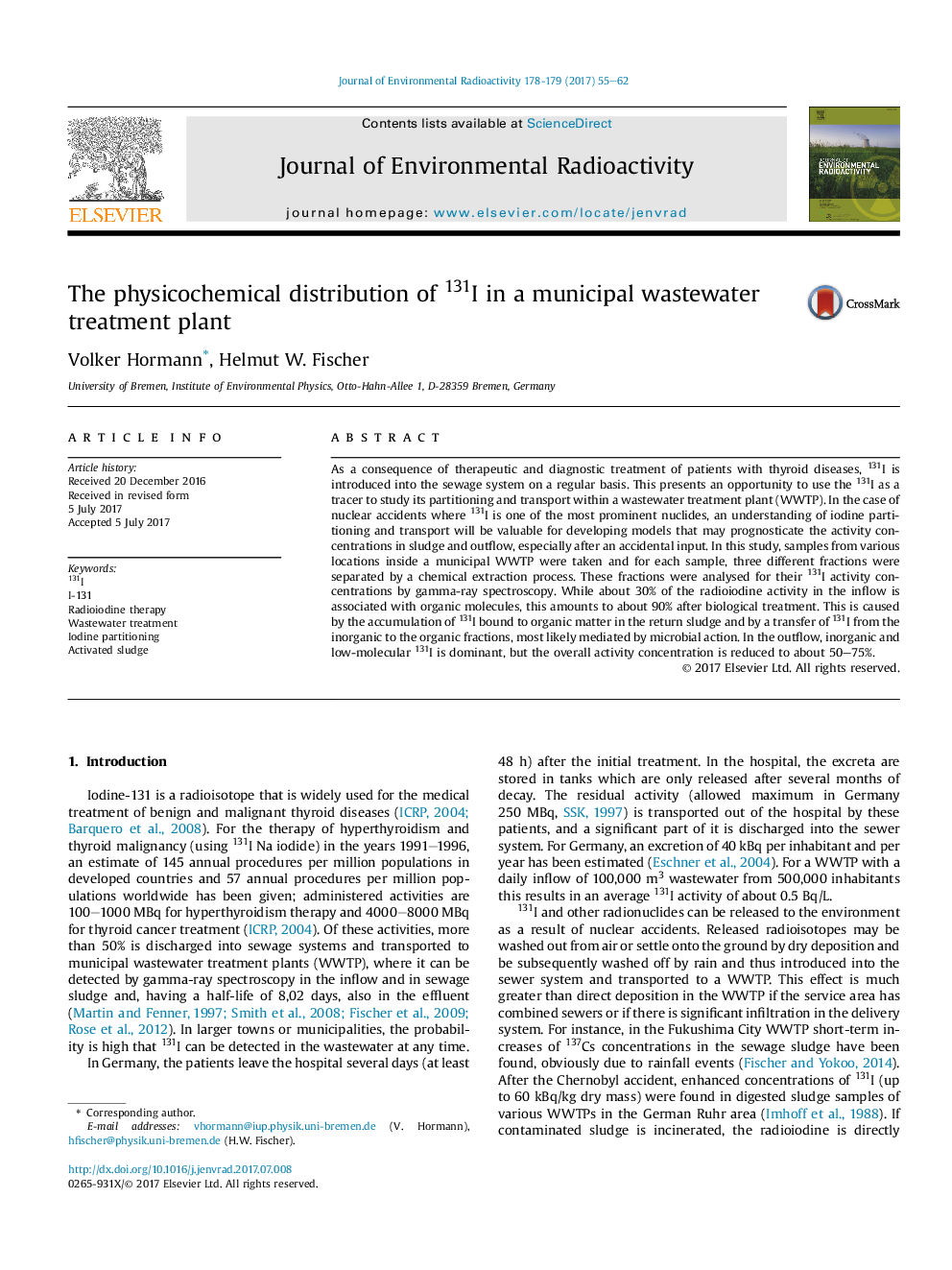| Article ID | Journal | Published Year | Pages | File Type |
|---|---|---|---|---|
| 5477420 | Journal of Environmental Radioactivity | 2017 | 8 Pages |
Abstract
As a consequence of therapeutic and diagnostic treatment of patients with thyroid diseases, 131I is introduced into the sewage system on a regular basis. This presents an opportunity to use the 131I as a tracer to study its partitioning and transport within a wastewater treatment plant (WWTP). In the case of nuclear accidents where 131I is one of the most prominent nuclides, an understanding of iodine partitioning and transport will be valuable for developing models that may prognosticate the activity concentrations in sludge and outflow, especially after an accidental input. In this study, samples from various locations inside a municipal WWTP were taken and for each sample, three different fractions were separated by a chemical extraction process. These fractions were analysed for their 131I activity concentrations by gamma-ray spectroscopy. While about 30% of the radioiodine activity in the inflow is associated with organic molecules, this amounts to about 90% after biological treatment. This is caused by the accumulation of 131I bound to organic matter in the return sludge and by a transfer of 131I from the inorganic to the organic fractions, most likely mediated by microbial action. In the outflow, inorganic and low-molecular 131I is dominant, but the overall activity concentration is reduced to about 50-75%.
Related Topics
Physical Sciences and Engineering
Energy
Nuclear Energy and Engineering
Authors
Volker Hormann, Helmut W. Fischer,
